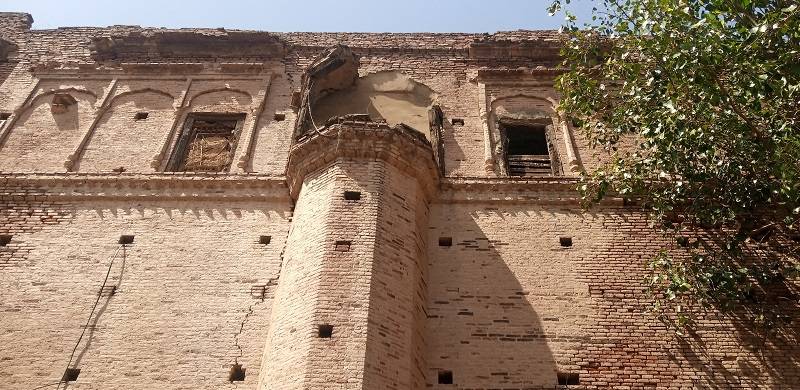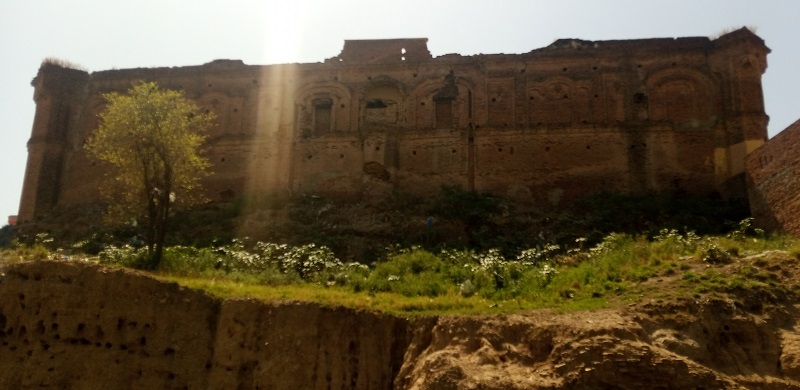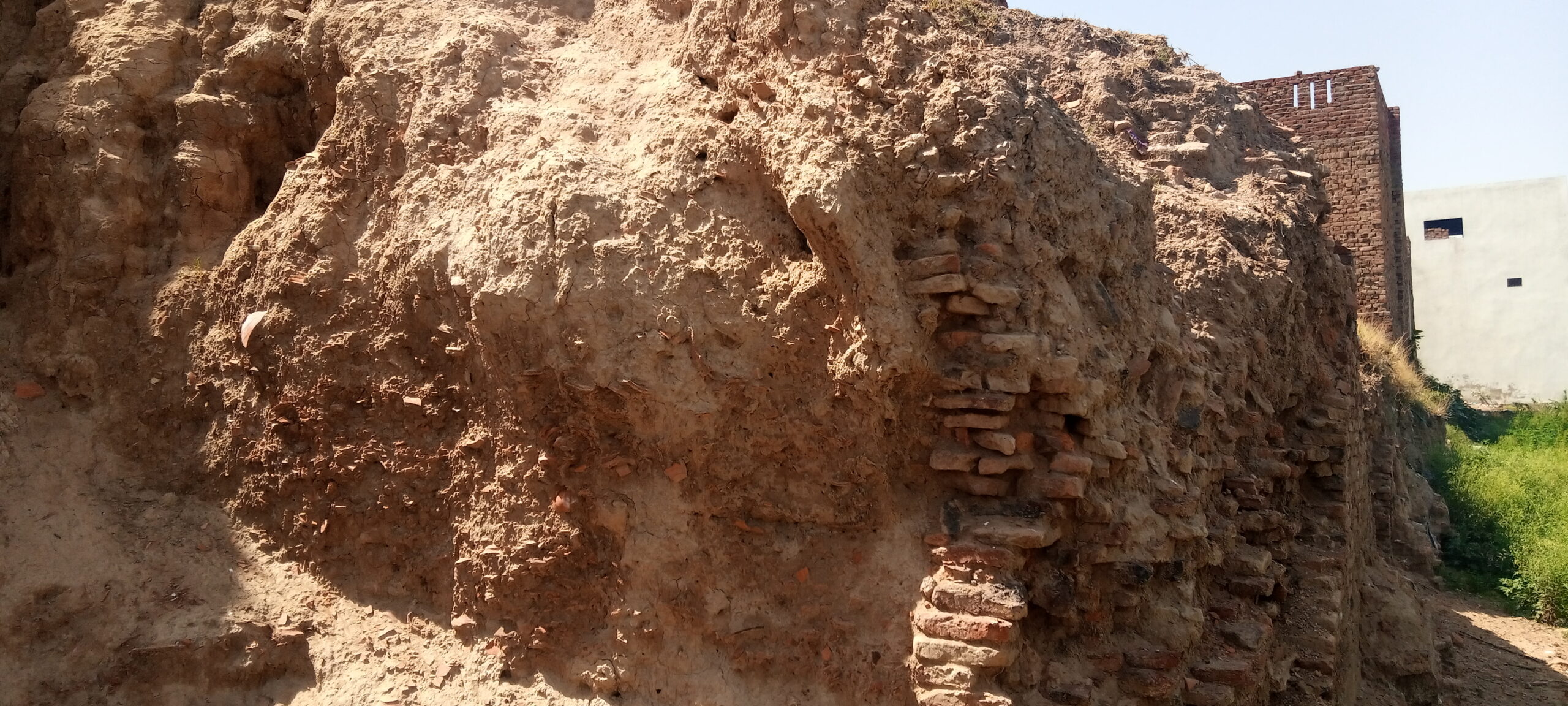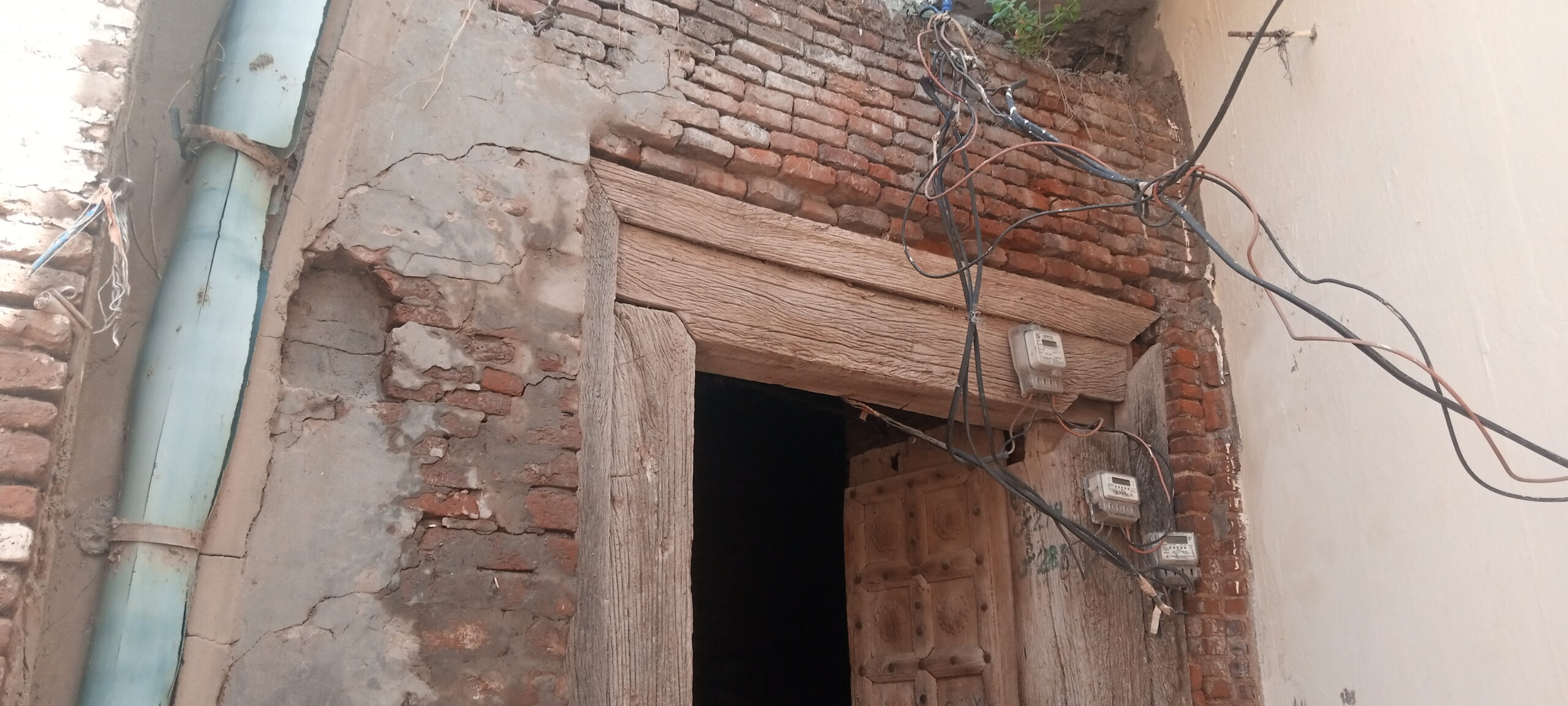
When Arundhati Roy wrote ““History’s smell. Like old roses on a breeze. It would lurk forever in ordinary things.” Maybe she smelled the soul of unnamed, undocumented remains of Bara Mehal (Big Palace).
Tehsil Shakargarh is located in Narowal district, having a rich history full of past grandeur. Before Independence, in Shakargarh a lot of Hindus and Sikhs used to live – as it was a gateway for going to the other side of Punjab.
Diwan Laxmi Chand was a rich Hindu landlord, and minister of Jammu (Maharaja Jammu) who used to live in Tehsil Shakargarh and district Narowal. He owned more than 30 villages in Narowal district. The story of Diwan Chand goes back decades, but his presence can still be smelled in the crumbling heritage somewhere in rural Punjab.
He built a decorative three-storey qila/haveli in the 19th century, and it is also known as Bara Mehal, i.e. Big Palace. The haveli was constructed all those years ago using mud, sandstone and wood. Each side of haveli has its own unique story.
The four remarkable pillars on each side have a traditional design and an escape tunnel. The walls of galleries and rooms are built in an exquisite way with dewa lamps. In fact, it seems every piece of architecture is rich with its own kind of exquisite beauty – and even more, the memories of people who lived there years ago. And yet, every piece is unexplored.
 The opening door of Bara Mehal opens to a village Kanjrur, which is situated on the top of an ancient mound, the place where once Dewan Laxmi Chand lived with his family – but he migrated to India in 1947. After their migration, the haveli remained empty for years.
The opening door of Bara Mehal opens to a village Kanjrur, which is situated on the top of an ancient mound, the place where once Dewan Laxmi Chand lived with his family – but he migrated to India in 1947. After their migration, the haveli remained empty for years.
But it is surprising how the history of this palace is not documented yet. The remains of the palace are disappearing day by day, and there is nobody to care for it. In fact, the details and secrets of the palace remain vague, even to people living there.
According to villagers, there used to be a huge garden in front of this haveli, which has been completely destroyed. The mudstone and outer walls of the haveli are still in perfect condition, proudly standing on every side, offering a view of the past.
A landmark building in the district, it depicts the memorable colours of the past but its freshness is gone. Unfortunately, after years, the qila is in a crumbling situation.
The possibility of it collapsing is not only dangerous for history and heritage, but also for some families who migrated from Kashmir and are currently living inside the qila. In fact, my visit brought home to me as to how Punjab’s heritage is being preserved only in Lahore and other major urban areas. Meanwhile, our rural heritage is falling apart – and nobody knows about it.
Tehsil Shakargarh is located in Narowal district, having a rich history full of past grandeur. Before Independence, in Shakargarh a lot of Hindus and Sikhs used to live – as it was a gateway for going to the other side of Punjab.
Diwan Laxmi Chand was a rich Hindu landlord, and minister of Jammu (Maharaja Jammu) who used to live in Tehsil Shakargarh and district Narowal. He owned more than 30 villages in Narowal district. The story of Diwan Chand goes back decades, but his presence can still be smelled in the crumbling heritage somewhere in rural Punjab.

He built a decorative three-storey qila/haveli in the 19th century, and it is also known as Bara Mehal, i.e. Big Palace. The haveli was constructed all those years ago using mud, sandstone and wood. Each side of haveli has its own unique story.
The four remarkable pillars on each side have a traditional design and an escape tunnel. The walls of galleries and rooms are built in an exquisite way with dewa lamps. In fact, it seems every piece of architecture is rich with its own kind of exquisite beauty – and even more, the memories of people who lived there years ago. And yet, every piece is unexplored.
 The opening door of Bara Mehal opens to a village Kanjrur, which is situated on the top of an ancient mound, the place where once Dewan Laxmi Chand lived with his family – but he migrated to India in 1947. After their migration, the haveli remained empty for years.
The opening door of Bara Mehal opens to a village Kanjrur, which is situated on the top of an ancient mound, the place where once Dewan Laxmi Chand lived with his family – but he migrated to India in 1947. After their migration, the haveli remained empty for years.But it is surprising how the history of this palace is not documented yet. The remains of the palace are disappearing day by day, and there is nobody to care for it. In fact, the details and secrets of the palace remain vague, even to people living there.

According to villagers, there used to be a huge garden in front of this haveli, which has been completely destroyed. The mudstone and outer walls of the haveli are still in perfect condition, proudly standing on every side, offering a view of the past.
A landmark building in the district, it depicts the memorable colours of the past but its freshness is gone. Unfortunately, after years, the qila is in a crumbling situation.
The possibility of it collapsing is not only dangerous for history and heritage, but also for some families who migrated from Kashmir and are currently living inside the qila. In fact, my visit brought home to me as to how Punjab’s heritage is being preserved only in Lahore and other major urban areas. Meanwhile, our rural heritage is falling apart – and nobody knows about it.

